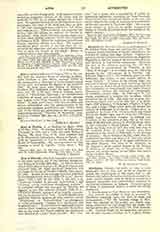

Atto, a faithful follower of Gregory VII in his conflict with the simoniac clergy, b. probably at Milan, made Cardinal of San Marco, assisted (1079) at the retractation of Berengarius in the Roman synod of that year, and signed the decrees of the synod of 1081. He may have been Bishop of Prwneste. Cardinal Mai published under his name (SS. Vet. nova coll., VI, 2, 60 sqq.), from a Vatican manuscript, a “Breviarium Canonum”, or miscellaneous collection of moral and canonical decrees, genuine and forged, from Pope Clement I to Gregory the Great. It deals particularly with clerical rights and duties, ecclesiastical acts, the administration of the sacraments, censures, jurisdiction, etc. Other cardinals of the name are mentioned in the anonymous (eighteenth-century) “Diatriba de Attonibus” published by Cardinal Mai (op. cit.; cf. P.L., CXXXIV, 902).

